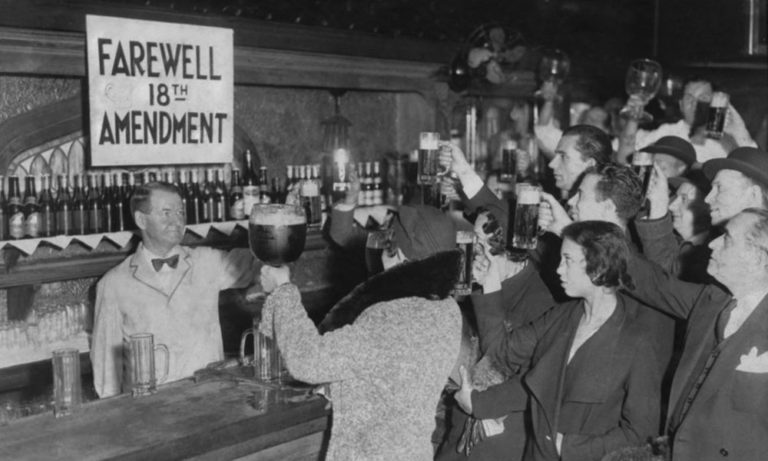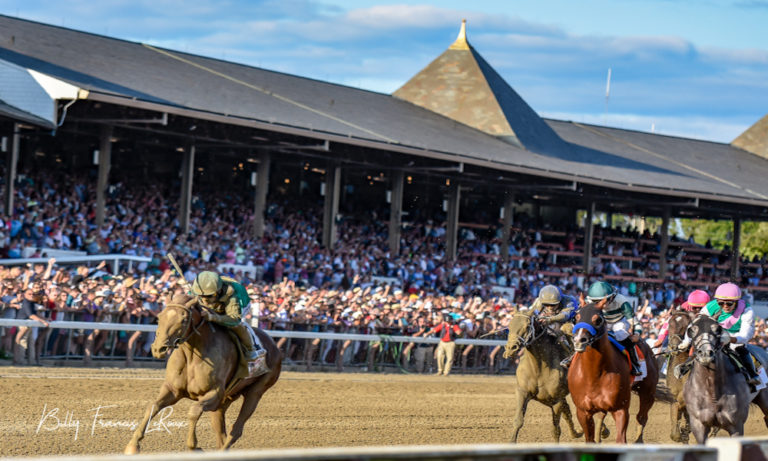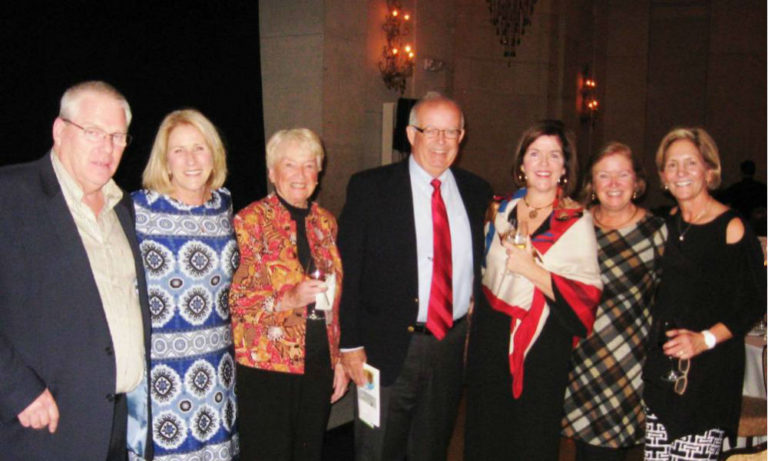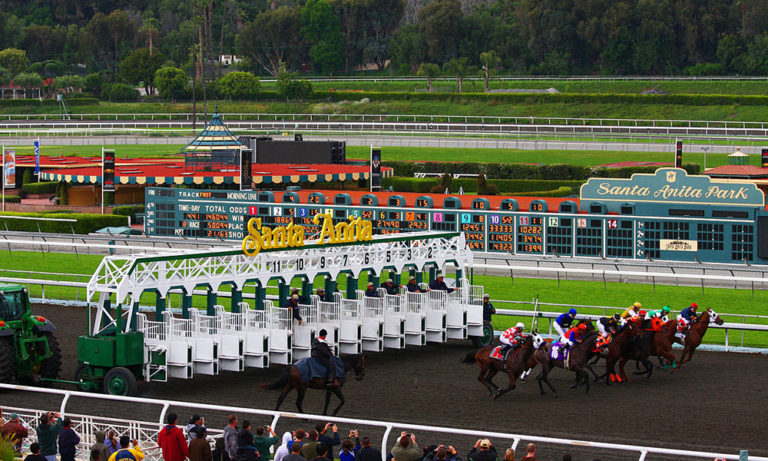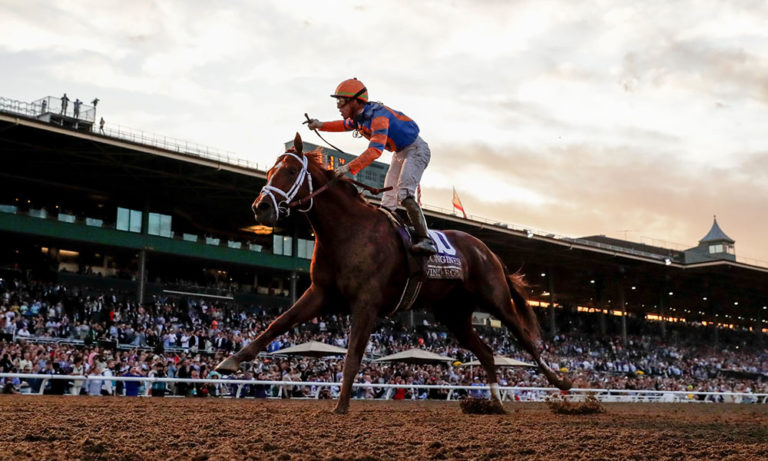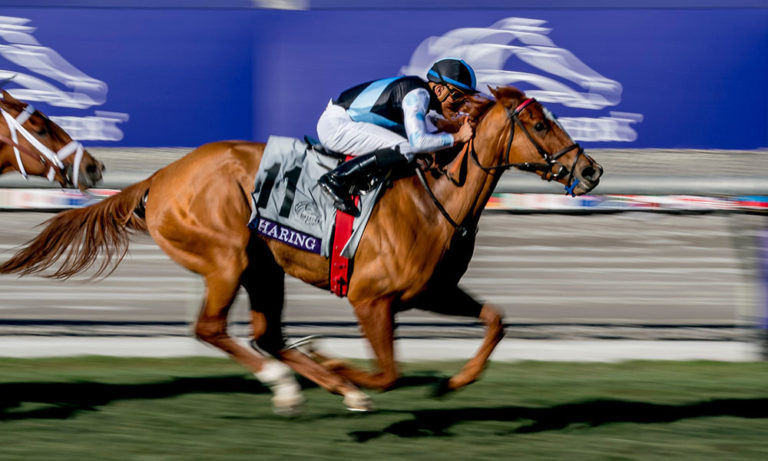ARCADIA, Calif. – Bob Baffert watched his horses train a little after 7:00 Sunday morning at Santa Anita and like many of the rest of us expressed appreciation for an extra hour’s sleep thanks to the time change Saturday night. Baffert had some other thoughts about time, specifically referencing Mitole’s 1:09.00 clocking for six furlongs in the Breeders’ Cup Sprint.
“That horse, he’s just so fast. That’s a 1:07 and change kind of horse, not 1:09,” Baffert said.
Mitole got a fast 112 Beyer Speed Figure for his notably pedestrian raw time. The dirt surface Saturday at Santa Anita was slow; Friday it was even slower. Baffert and other local trainers talked about the way fields in dirt races Friday and Saturday wound up spread out all over relatively vast distances. The interpretation was obvious – a large percentage of them were struggling to cope with a deep, difficult surface.
The tiring track enhanced the standard fast-early, slow-late nature of American dirt racing. The last three furlongs in the Breeders’ Cup Distaff, a 1 1/8-mile race, went in 39.57, beyond pedestrian. The final half-mile of the Breeders’ Cup Classic took 52.09 seconds to run, falling into the category of “timed with a sundial.” And that was Saturday! Friday was even slower. Storm the Court went 1 1/16 miles winning the Juvenile in 1:44.93, the slowest 1 1/16-mile Juvenile in the race’s history. The Juvenile came up fast compared to the Juvenile Fillies, where British Idiom required a hard-to-process 1:47.07 to complete her winning 1 1/16-mile journey.
I say this regularly and it applies especially to this Breeders’ Cup: When you contest races over a radical surface you limit the pool of horses capable of producing something close to a baseline performance over it. It’s a tough way to conduct “championship racing” for sure.
As for the grass course, the portable inner rail was taken down before Thursday races exposing a strip of fresh, unused ground that proved to be the best part of the course. Speed could be very effective both Friday and Saturday, a trend related to the ability of front-runners to find the fence and the bouncy part of the course.
Okay, so that’s the broader perspective. Now, let’s take a look at the specific races over the two-day 2019 Breeders’ Cup. I’ll start with the Classic and work my way back.
BC CLASSIC
Winners: Vino Rosso, Todd Pletcher, Irad Ortiz, Bob Baffert
I told I’m not sure how many people last week that the Jockey Club Gold Cup had been Vino Rosso’s Breeders’ Cup, asserting that was the race connections really had targeted this fall and the BC Classic, strange to seem, was more an afterthought. Wrong! Vino Rosso went from a 105 Beyer Speed Figure in his JC Gold Cup to a career-best 111 Beyer in the BC Classic, and even if you’re not a strict numbers person, the going-away win over McKinzie clearly was a high-water mark for Vino Rosso, who’s retired now. Todd Pletcher won his first Classic and really found a way to bring out the best of Vino Rosso, a horse who had struggled to find himself at 3 and even at times this season.
Irad Ortiz won the Juvenile Turf Sprint on Friday but also watched Structor win the Juvenile Turf for Ortiz’s main man Chad Brown. Ortiz had ridden Structor when he won the Pilgrim Stakes but opted to ride Decorated Invader in the Juvenile Turf, finishing fourth.
Saturday, he won the Dirt Mile with Spun to Run before capping the card with an epic double, the win on Vino Rosso following victory aboard Bricks and Mortar in the BC Turf. What . . . a . . . day.
Baffert didn’t win a Breeders’ Cup race, but you can’t say he didn’t have McKinzie at the height of his powers in the Classic. War of Will set a strong pace and McKinzie was bound to follow, and Mongolian Groom’s three-wide pressure forced Joel Rosario on McKinzie to make an early move before the three-furlong pole to take control of the race. One-and-one-quarter miles always was going to be a struggle for McKinzie, and the nature of his trip only made staying the distance tougher. He lost while turning in a high-level performance.
Losers: 3-year-olds
There were four 3-year-olds in the Classic, and Math Wizard’s distant fifth-place finish was the high-water mark for the sophomore set. Math Wizard won the Pennsylvania Derby, a major upset, and didn’t even race in the Triple Crown, and while he seems clearly improved, he’s not, you know, American Pharoah. Code of Honor, the Travers winner who was placed first in the Jockey Club Gold Cup via Vino Rosso’s disqualification, never reached contention and was seventh. Ohio Derby and Oklahoma Derby winner Owendale was 10th. Even War of Will – you remember, the Preakness winner, right? – finished in front of Owendale after fading badly off the pace. The 2019 crop of 3-year-olds looks weaker than ever right now.
Horses to watch: Higher Power
Tough to find much here, Higher Power, the Pacific Classic winner, probably prefers a forward trip but was away poorly and raced from behind. He had a moment around the far turn when he looked like he’d get into the heart of the matter, and even after flattening out, he ran pretty well, all things considered.
BC TURF
Winners: Japan, Chad
Bricks and Mortar ran his last race in the Turf and was awesome. Watch closely to appreciate the finer points of both horse and rider, Irad Ortiz, in this race. They are in tight, claustrophobic quarters four about 1 1/4 of the Turf’s 1 1/2 miles and never blink, holding position, chugging along, waiting for something to open up late. And when it did, Bricks didn’t miss the mark. His perfect season, loaded with seven-figure purse wins from January through November, was epic, and my guess is Japan is about to put into circulation a stallion who will prove successful.
Chad Brown knew all year that he’d face a difficult year-end choice with Bricks and Mortar, whose ideal distance appears to be nine to 10 furlongs. No Breeders’ Cup races in that range and Brown initially was thinking Mile for Bricks. That thinking started to change a few weeks ago, and look where it got him.
Losers: Euros, East Coast turf form
United, a 51-1 shot, finished second by a neck to Bricks and Mortar. Meanwhile, the English Derby winner, Anthony Van Dyck, checked in third, 1 1/4-lengths behind United. Anthony Van Dyck not only won the Derby but finished an encouraging third in the Irish Champion at a 10-furlong distance shorter than his best. He was supposed to suit Santa Anita’s fast ground and though his trip wasn’t ideal, he was found wanting. Yet AVD was infinitely better than the other leading European hope, Old Persian, who had the same sort of tight-quarters trip as Bricks and couldn’t cope with it, slipping back to finish 11th of 12. “The Euros” got one win, Iridessa’s in the Filly and Mare Turf, and two places from the 30-odd horses they sent for the Breeders’ Cup in one of their poorer recent showings.
Yet the Euros were better than the East Coasters in the Turf. Channel Cat, Arklow, and Channel Maker all had won important (or somewhat so) turf stakes this year and finished, respectively, seventh, eighth, and 12th.
Horses to watch: None
BC DISTAFF
Winners: Ignacio Correas, Midnight Bisou
Correas, an Argentine import, likely would’ve had a soft landing underlying any fall he took during the early stages of his American racing career. His family in Argentina holds land and has been breeding horses for generations: They seem to be doing all right. Yet Correas, who had worked in European training yards and learned at the feet of Argentine masters, started low when he first came to the U.S. a couple decades ago. His last time in California he’d been no more than assistant to the late trainer Bill Curran. The guy has worked hard and really knows and loves his horses. Ignacio rarely has met a ride that didn’t piss him off in some way, and he can be the bane of jockey agents, but did he ever manage Distaff winner Blue Prize through a satisfying season.
Midnight Bisou lost as one of the shorter prices on the two Breeders’ Cup cards, but to these eyes it looked from the start like she was struggling with the Santa Anita surface. Normally Midnight Bisou is taking jockey Mike Smith wherever he needs and wants to go, but in this race she was going nowhere until Smith really got busy. Looked for three strides in upper stretch like she might have a shot at Blue Prize, and while that never happened, Bisou’s gritty second put her heart on display.
Losers: None
Horses to Watch: None
BC MILE
Winners: Chad
Chad Brown won his first BC Mile with a mare whose owners had supplemented into the race for $100,000. That’s a big gamble that a horse will reproduce the form that motivated the owners to pony up in the first place, and whatever guidance Brown gave them following Uni’s course-record win in the First Lady proved prescient. Uni has learned to run the far turn as well as any turf miler in America, which puts her in position to unleash a devastating stretch move. She wasn’t a horse of this quality before the second part of 2018 and Brown deserves credit for getting her here.
A little lost in the shuffle: Without Parole had every right to run at the back of this field making his US debut after a layoff extending to March. Instead, he nipped leading Euro shipper hope Circus Maximus for show.
Losers: Euro turf milers, on-paper pace analysis
Seems fair to say Circus Maximus was one of the top overseas milers of 2019, bringing two one-mile G1 wins into the Mile, but he just couldn’t really cope with such a strong pace coupled with the tight turns and Santa Anita’s short stretch. The other Euros were seventh, eighth, ninth, and 11th. I’ve been blabbing about the weakening Euro-miler division for years, and I think we saw it here.
With Bolo was scratched Saturday morning the early-pace void in the Mile grew even larger – or so it looked on paper. In the end, it only takes two, and the connections of Hey Gaman and El Tormenta both had designs on the lead. Neither jockey would back off and the half-mile pace, 45.32, wound up faster than par.
Horses to Watch: Without Parole
This 4-year-old’s overseas career stalled after he won the 2018 St. James’s Palace Stakes but this, his first in America and first for trainer Chad Brown, was very encouraging.
BC SPRINT
Winners: Ricardo Santana, lead changes
Oh man, I loved the way jockey Ricardo Santana dealt with a tough situation with Mitole, who was drawn inside main speed Shancelot and faced the choice of knocking noggins with that very fast horse or finding a way to take back and come around in the Sprint. Santana broke Mitole sharply and gave himself the option to lead, but Shancelot was being sent and Santana quickly went to Plan B, taking a light hold and guiding Mitole to the outside. Santana never even really showed his cards until the three-sixteenths pole, and while it’s helpful to be sitting on a monster, this was a fine ride under pressure.
It looked with about 300 yards left like Shancelot might keep Mitole at bay, but then came a slightly delayed lead change and Mitole immediately surged and ran down Shancelot. What a year for Mitole.
Losers: Catalina Cruiser
A supposedly fast, talented horse for the second year in a row (in 2018 it was the Dirt Mile) showed zip in a Breeders’ Cup race.
Horses to Watch: none
BC FILLY AND MARE TURF
Winners: Joseph O’Brien, Vasilika
Maybe the younger O’Brien (son of Aidan, of course) knew all along where he was running Iridessa, but from all the information I gleaned in the several days leading to Breeders’ Cup entries on the Tuesday before the races, O’Brien, 26 and with little BC experience, was legitimately torn between the Filly Mare Turf over 1 1/4 miles and the Mile. Well, maybe Iridessa would’ve won the Mile, too, but what we do know is she won the Filly and Mare Turf. That’s two balls put strongly into play by JOB – choosing the right race and bringing the right horse, since Iridessa really thrived over the fast, tight Santa Anita turf course.
I owe Vasilika an apology. I pooh-poohed all the winning the mare was doing against inferior SoCal female turf competition for two years while maintaining that merely being consistently good didn’t make you great. Well, Vasilika ran a fine race shipping to Keeneland in the First Lady last month and here beat the world-class Sistercharlie while narrowly missing a Breeders’ Cup win. She’s not just regionally good, but wholly good.
Losers: Team Hannon
Richard Hannon Sr. had a long track record of zero Breeders’ Cup glory and his successor, Richard Hannon Jr., is maintaining the family tradition. Billesdon Brook looked like a horse who’d suit firm-turf American-style racing but instead never offered a challenge and finished eighth here. Keep in mind that Iridessa had been no match for Billesdon Brook in the Sun Chariot Stakes on Oct. 5.
Horses to Watch: Fanny Logan
Rising 3-year-old from John Gosden’s yard in England had a tough outside draw for her first try at the Group 1 or Grade 1 level, and despite losing meaningful ground came with a good run to finish just behind champion Sistercharlie. Wonder if trainer John Gosden might look to Hong Kong or Dubai with this filly.
BC DIRT MILE
Winners: Best last-out Beyer, Korean form
Spun to Run’s 110 Beyer Speed Figure earned in an ungraded, six-figure-purse, two-turn dirt-mile stakes last month at Parx laid over anything in the Dirt Mile. On the one hand, there were no other speed figures on his form to validate that performance, but on the other, Spun to Run did have solid backing numbers and clearly had improved through the second part of 2019. Spun to Run ran to the fig and paid $20.40, which is quite the price for the “fastest horse on paper.”
Blue Chipper did himself proud as Korea’s first Breeders’ Cup starter. He couldn’t quite match stride with Spun to Run but kept on gamely and finished third at 46-1.
Losers: Last-gasp Improbable love, Mike Smith, “pace players”
I still maintain that Improbable is a vastly talented horse. There’s also no denying he seems incapable of translating that talent to racetrack performance.
Didn’t Mike Smith just get taken off McKinzie because he was too far off the pace for no good reason in the Awesome Again Stakes? Tell me that heavily favored Omaha Beach’s established early pace couldn’t have kept him within reasonable striking range of Spun to Run with more aggressive tactics.
Speaking of speed: Coal Front? Diamond Oops? On the form, you were running right with if not in front of Spun to Run. Neither horse came close to getting involved in the pace.
Horses to watch: None
BC TURF SPRINT
Winners: Gary Barber, turf sprinters back from layoffs
Really liked Belvoir Bay in the Turf Sprint and was closely tracking her win price. Several minutes to post and the steady 17-1 or 18-1 she was offering suddenly became 13-1. The prominent owner Gary Barber likes to back his opinions at the betting window. Trainer Peter Miller had given nothing but favorable reports regarding Belvoir Bay, and I’ll go ahead and guess that sudden win-pool move came mainly from one dude.
Is there a type of race better for a capable layoff trainer than a turf sprint? Belvoir Bay’s form lines stacked up with anyone’s in a five-furlong turf sprint, so was she generally ignored because she hadn’t raced since June. Surely a five-furlong grass race is the easily sort of spot for which to ready a horse after a long break.
Losers: None
Horses to Watch: Stubbins
Granted, Stubbins raced inside and along the better part of the course, but once he finally shook free from upper-stretch traffic? Zoom!
BC FILLY AND MARE SPRINT
Winners: Joel Rosario, Bellafina’s home cooking, presidential tweets
Joel Rosario rode some fine races over the weekend but put on a clinic in the Filly and Mare Sprint in working your way off the fence with a speed horse. Roario, breaking the brilliant Covfefe from post 1, never gave away anything while still letting Danuska’s My Girl go the front and working his way into an outside-pressing trip.
Bellafina doesn’t train like a good thing even on her home track, but something about shipping throws her for a loop and she is so, so much better racing out of her stall. Some questionable tactics early and middle here or maybe she really gives Covfefe a scrap.
When, in 20 years, someone is perusing Breeders’ Cup race histories and sees the name of a winner listed as Covfefe, will they have any clue what the name means?
BC JUVENILE
Winners: Independence Hall, Dennis’ Moment
Independence Hall didn’t run in the Juvenile – which is the point. This was a totally uninspiring slog-fest from which one favorite (Maxfield) was scratched early in the week, another (Dennis’ Moment) did a face-plant at the start, and a third, Eight Rings, performed abysmally. Independence Hall’s Sunday romp in the Nashua at Aqueduct was the best 2-year-old showing of the weekend.
At least Dennis’ Moment emerged with his reputation intact, as well, apparently, as his body, which is a blessing considering the terrible stumble he took leaving the gate. I’ve heard some people claim Dennis had plenty of time to recover and show something. Bunk! A stumble that extreme takes a horse entirely out of his rhythm and game 9,999 times out of 10,000.
Losers: Most of the field
Horses to Watch: None
BC JUVENILE FILLIES TURF
Winners: Morning-trainer watchers, racing writ large
I know there are a lot of deep insiders who pick up a lot more from watching morning exercise than I do, but I still do it as much as I can during weeks like the Breeder’s Cup. I look at it as a lifetime learning curve, and it’s always essential to keep in mind that if you don’t know a horse’s baseline, it’s hard to make judgements about them. Often, it seems easier to go negative than positive, which is fine, because throwing horses out can be very useful. So, with that in mind, I note here that Fair Maiden struck this observer as one of the least focused horses I saw training all week at Santa Anita, and she ran EXACTLY the way she trained.
I think Graham Motion really treasures Shared Account, who won the BC Filly and Mare Turf, in her day, and it must have done him especially proud to upset the Juvenile Fillies Turf with Sharing, a daughter of Shared Account. Motion is legitimately thoughtful, kind, and horse-caring, and when he wins big races, it’s good for Racing with a capital R.
Losers: None
Horses to Watch: Albigna
Not going to go jock-blaming here because it seemed more circumstantial than anything when Albigna wound up 13th of 14 in the early and middle stages. No one else did anything from the vert back of this field besides she, and when she finally found daylight past the three-sixteenths pole, this Ireland-based filly unleased a series of strides that seemed to stretch all the way to Monrovia.
BC JUVENILE FILLIES
Winners: Santa Anita concessions
I mean, it took so long to complete the second half of this race, I swear I saw a bunch of folks go to the beer stand at the three-eighths pole and get back outside in time to see the Juvenile Fillies finish.
Losers: Everyone in the race
Granted, the Santa Anita surface was especially slow, but the final time here of 1:47.07 was the slowest in race history BY MORE THAN ONE SECOND.
Horses to Watch: Everyone in the race
It’s possible the racetrack itself had everything to do with how this field performed. I’m willing to keep my eyes open and see where these horses land.
BC JUVENILE TURF
Winners: Chad, racing luck
Chad Brown himself early in the week said he really believed the colt Structor would have to step forward to have a chance to win the Juvenile Turf. I’m not sure Structor really even improved much over his last-start Pilgrim Stakes win, but he was the one running Friday, capitalizing on favorable circumstances.
Yes, I’d say the Juvenile Turf trifecta – Billy Batts and Gear Jockey following Structor home – was a lesson in racing luck. The top three either stuck relatively close to a pace that turned really slow after the first quarter mile or, in Structor’s case, had the seas part when he needed room. Meanwhile, Decorated Invader and Arizona, who’d wind up fourth and fifth, had nightmare trips, and Hit the Road, who’d run right over Billy Batts in the Zuma Beach, was drawn in the parking lot and never had a chance.
Losers: Peace Achieved
The model of consistency through late summer and autumn could’ve put his early pace to good use here, but somehow didn’t even come close to making the front despite being ridden out of the gate.
Horses to Watch: Arizona, Decorated Invader
There are some races where a horse isn’t just racing in last place but has gotten himself into a jackpot while pinned behind the horses racing second- and third-last. Ladies and gentleman, let me introduce you to Arizona! The Juvenile Turf chalk was in trouble from the moment he broke flat-footed from an outside draw. He really finished full of run. Decorated Invader was rank and also stuck at the back before going far too wide to do damage.
BC JUVENILE TURF SPRINT
Winners: Wesley Ward
Ward had what appeared to be easily the best Juvenile Turf Sprint hand all fall and played it out successfully with unbeaten Four Wheel Drive comfortably getting the cash here. Ward has no peer in getting young horses like FWD to make the most of their brilliance.
Losers: European straight-course sprint form
All well and good for the overseas trainers to take their 2-year-olds (there were six of them entered here!) to work around turning tracks before coming to the Breeders’ Cup. But there is really no simulating the adrenaline and crush of a five-furlong sprint around a bend, and these overseas 2-year-olds who have only raced down straight courses don’t seem ready for a race like this. Five of them finished between seventh and 12th in the JTS and the best performance, a fifth from 59-1 Dr Simpson, came from the one horse who had real overseas experience racing around turns.
This story originally appeared on DRF.com.

